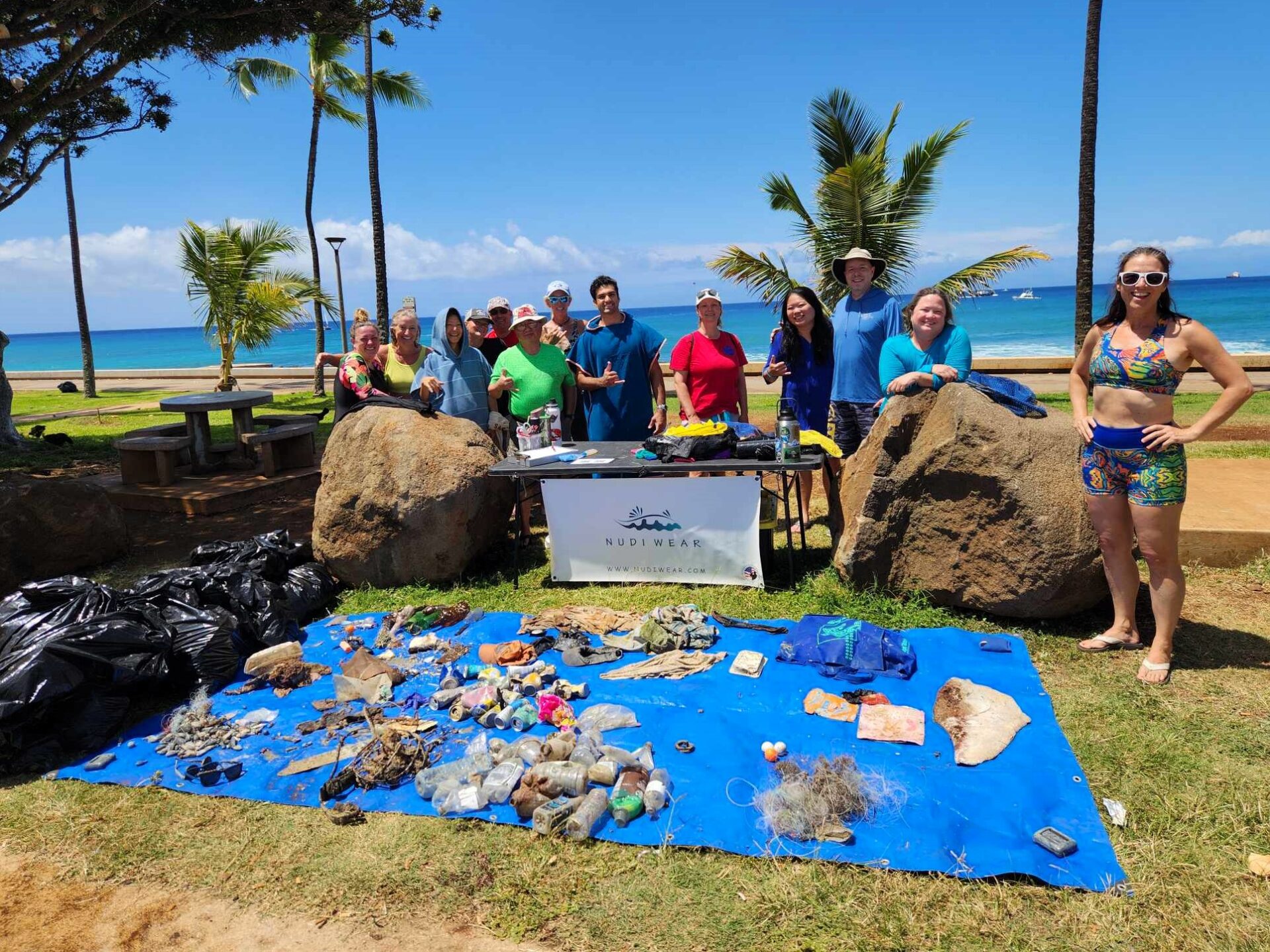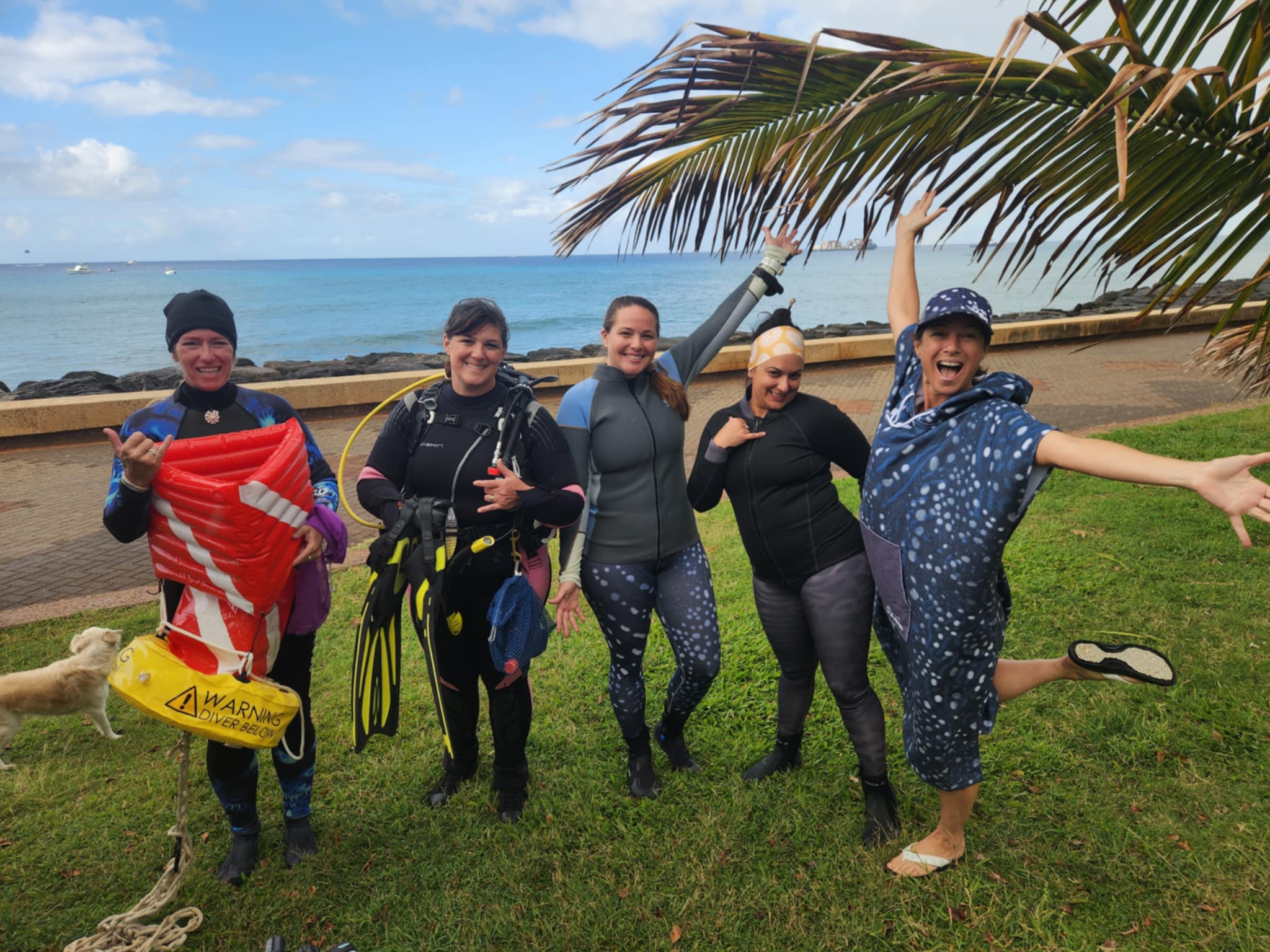You’re traveling to Hawaii and looking forward to hitting the beach. Maybe you want to chill by the pool, or even try out snorkeling.
But, you want to do it right— the islands see a lot of tourism. If “Our Favorite Sustainable Visitor” was a category Jeopardy, you’d want your name to be the answer.
We’ve got you covered! Here are five ways to swim more sustainably as you travel to Hawaii this summer.

A beautiful day to be sustainable in Hawaii | Photo by AussieActive on Unsplash
1. Use genuine reef safe sunscreen.
You’ll notice many of the locals wearing sunscreen that leaves behind a white film on their skin. No, it’s not an island fashion trend: it’s the smart choice! Non-sheer sunscreen is sustainable not only for you, but for the environment.
Sunscreen has to be free of oxybenzone and octinoxate in order to be sold in Hawaii. Unfortunately, there are other chemicals that can harm coral reefs.
Imagine a salsa brand saying their salsa isn’t spicy because it doesn’t have jalapeño peppers. However, one of the ingredients is ghost peppers— so it’s definitely spicy! But it’s labeled as “not spicy” because it doesn’t have jalapeños. This is the situation with sunscreen. Even though a sunscreen bottle has a “reef safe” sticker and follows Hawaii’s rules, that doesn’t make it reef safe.
The Haereticus Environmental Laboratory (HEL) is a credible source that has tested the effects of different sunscreen chemicals on the environment. They have an up-to-date list of chemicals that were scientifically proven to harm the environment.
Basically, try to steer clear of these chemicals when you travel to Hawaii.
Here’s a down-and-dirty summary: only zinc oxide and titanium dioxide are reef safe and only when they’re sold as non-sheer sunscreens. They become sheer when they’re broken down into nanoparticles (which are the problem). Look for brands that say “non-nano” and have the HEL seal of approval.

This stamp of approval means the HEL deemed the sunscreen sustainable | Photo courtesy of haereticus-lab.org
2. Opt for sustainably made swimwear.
So… you just read the last section and looked up prices for that reef safe sunscreen. Ouch.
Trust us, we’ve been there. Want to save some money? Instead of endlessly buying sunscreen, try wearing swim leggings or long sleeved swimsuits (or both!). You’ll reduce the amount of lotion you go through, saving you money in the long run.
And yes, you can get swim leggings that are made sustainably! It’s all about the fabric. Swimsuits are typically made out of polyester, Lycra, or nylon. These are types of plastic, similar to those you find in disposable water bottles.
Since the water bottles are getting the boot anyways, recycling them into swimwear keeps that plastic out of the landfills. It’s like if you made too much pasta for dinner, but instead of throwing away the extra noodles, you make pasta salad for lunch the next day.
Companies like Nudi Wear take recycled plastic and “upcycle” it into clothing. You get the same durability and longevity of a regular swimsuit, but you save plastic from heading to the landfill. Check out the process here.
And psst… Nudi Wear’s long sleeved swimsuits are dropping soon!
3. Watch where you put your feet.
Do you like touching the bottom of the pool when you swim? Then you’re like the grand majority of people.
As you travel to Hawaii, keep in mind that putting your feet down in the ocean may mean stepping on an animal: coral.
Coral, weirdly enough, is an animal! And just like your dog, cat, or baby nephew, it doesn’t like getting stepped on. If it looks like you’re about to touch down on a dusty brown rock, assume it’s a little guy that doesn’t want a foot in its face. The most sustainable way to interact with the reef is to leave it untouched.

These folks are doing an awesome job keeping their feet off the coral. | Photo by phaisalphotos maldivesphotographer on Unsplash
Don’t want to worry about stepping on coral? Try swimming at sandy beaches or ones with lots of people. Did you travel to Hawaii to avoid crowds? Try using swim goggles so you can see where you’re putting your feet.
4. Join a beach cleanup.
You’re traveling to Hawaii to hit the beach anyways, so why not do a beach cleanup?
Not only will you help make a great place greater, but you’ll meet some of the enthusiastic people who call Hawaii home. Plus, you may wind up on a beach you never would have gone to on your own. What’s a better way to get immersed in sustainable island life than doing something local?
Nudi Wear has a cleanup every month on Oahu. Can’t make it? Check out 808 Cleanups, Sustainable Coastlines Hawaii, or Sharkastics for their event schedules. Plus, you can make any beach you swim at a little cleaner before you leave— no event required.
5. Bring a reusable water bottle to stay hydrated.
Sick of carrying around that plastic water bottle you bought at the LAX airport for eight dollars? Invest in a reusable one!
You can leave a reusable bottle in the sun and it won’t leach chemicals into your drink like disposable bottles do. So you can lay out and take your time captioning your “Travel to Hawaii” Instagram post.
We could go on about the benefits of reusable bottles, but the biggest benefit? You can put stickers on them. The world needs to know you’re a creative and tasteful person! Need we say more?

This could be you when you travel to Hawaii. | Photo by Brad on Unsplash
Live Pono, Be Sustainable
Itching to immerse yourself in island life even more? Try shopping for local brands while in Hawaii!
Sustainable, Hawaii-based brands like Nudi Wear are all over the place. You just need to know where to look. Find those swim leggings you need at some of these awesome retailers.
Sources:
Bauer, Brent A. “What is BPA, and what are the concerns about BPA?” Mayo Clinic. 24 Mar 2023. https://www.mayoclinic.org/healthy-lifestyle/nutrition-and-healthy-eating/expert-answers/bpa/faq-20058331#:~:text=Exposure%20to%20BPA%20is%20a,2%20diabetes%20and%20cardiovascular%20disease.
“What chemicals are on the HEL List?” Haereticus Environmental Lab. 2018. https://haereticus-lab.org/protect-land-sea-certification-3/
Yuan, Shengwu et al. “Environmental Fate and Toxicity of Sunscreen-Derived Inorganic Ultraviolet Filters in Aquatic Environments: A Review.” Nanomaterials (Basel, Switzerland) vol. 12,4 699. 19 Feb. 2022, doi:10.3390/nano12040699








Leave A Comment